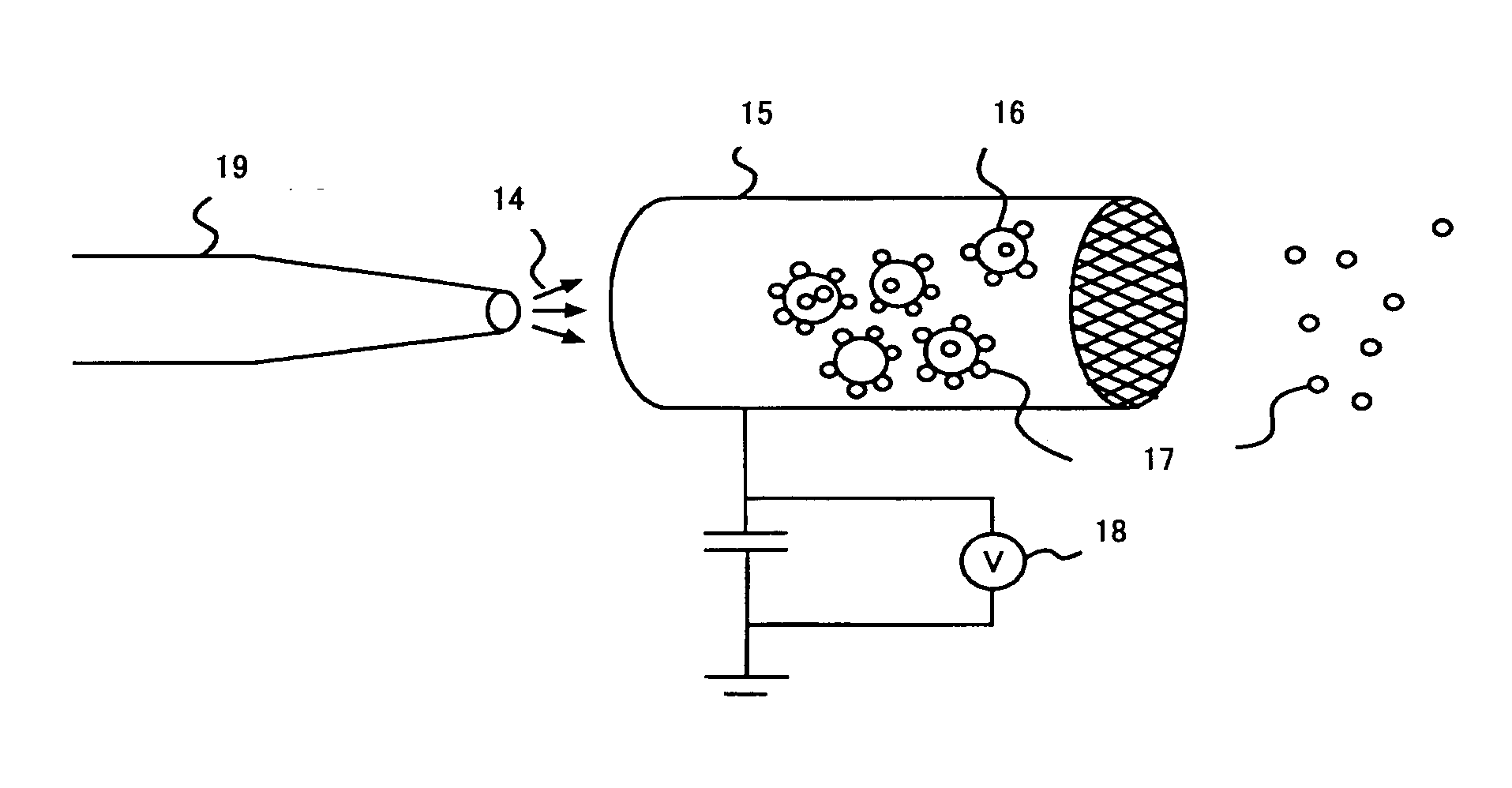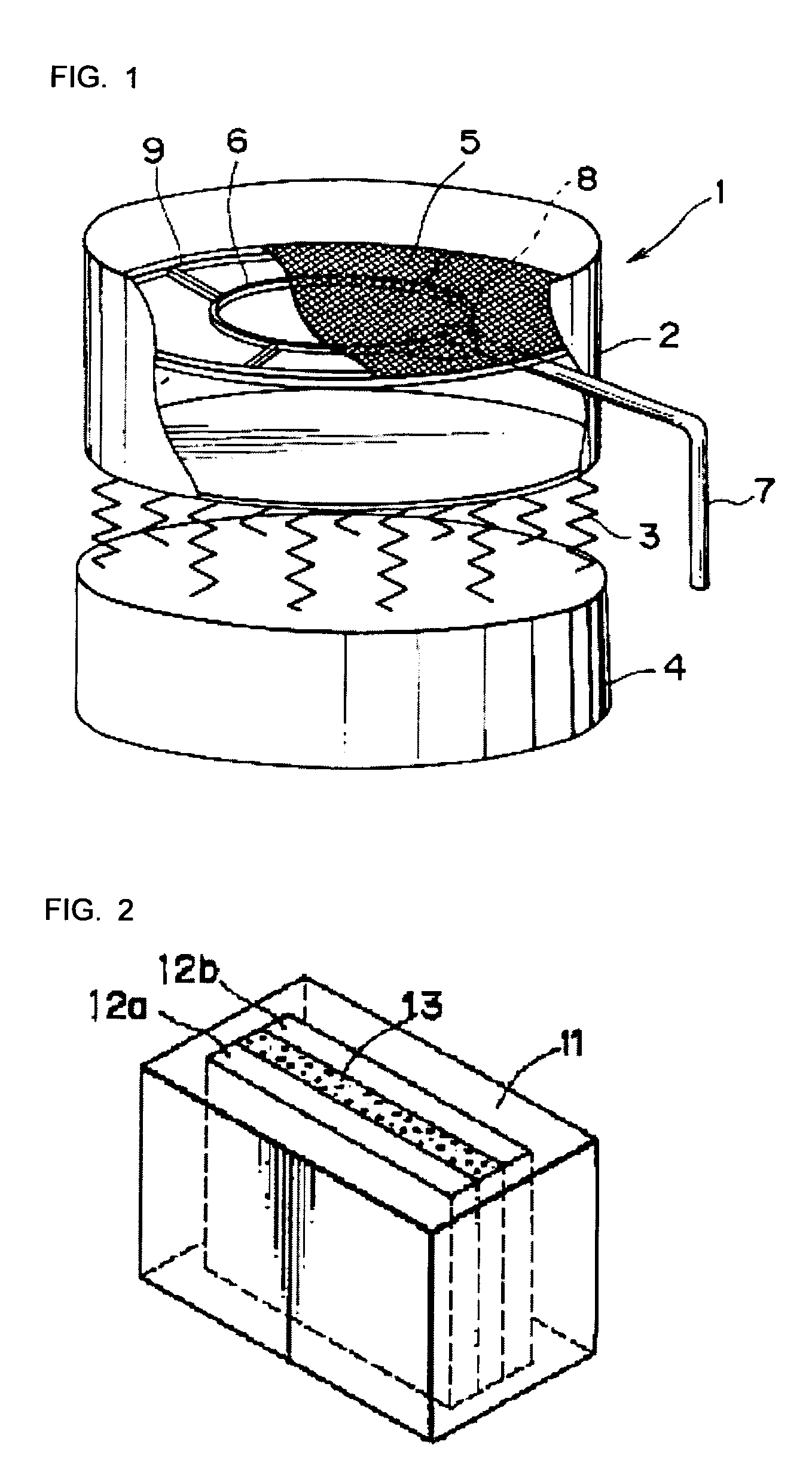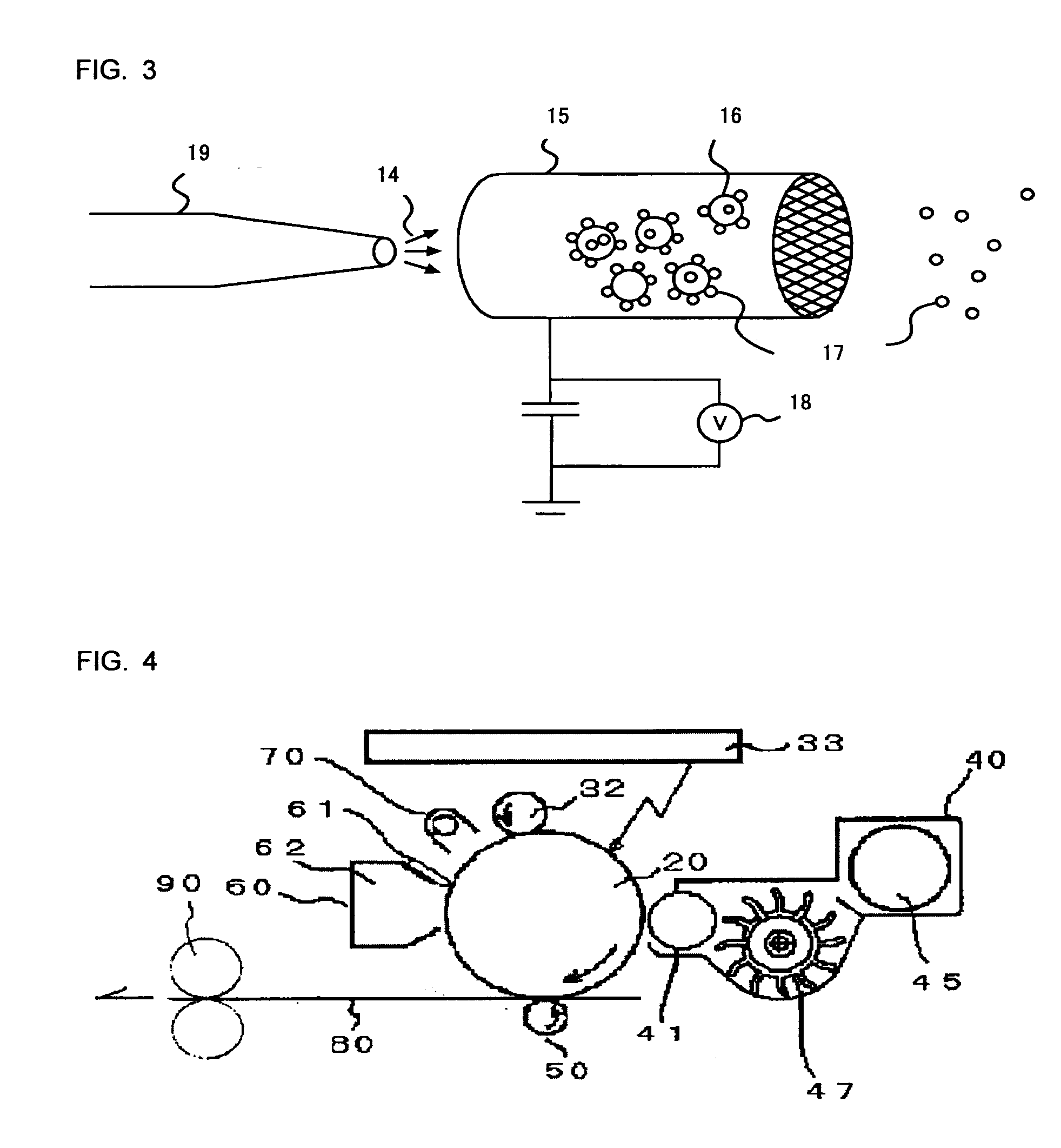Electrophotographic developer and carrier therefor, core material particle for carrier for electrophotographic developer and production method thereof and image forming method
a technology which is applied in the field of electrophotographic developer and carrier, core material particle for carrier for electrophotographic developer and production method thereof, can solve the problems of developer still having unsolved, unsolved big issue, increase production cost, etc., and achieve excellent granularity, prevent the occurrence of carrier adhesion, and high image quality
- Summary
- Abstract
- Description
- Claims
- Application Information
AI Technical Summary
Benefits of technology
Problems solved by technology
Method used
Image
Examples
production example 1
Core Material Production Example 1
[0154] 60 mol % of Fe2O3
[0155] 40 mol % of MnO2
[0156] Ferrite raw material composed of the above-stated oxides with the compounding ratios was treated in a wet blending process using a bead mill, and then the mixture was dried and crushed. The crushed mixture was temporally baked in a calcination process at 850° C. for 1 hour, and then it was treated in a wet grinding process using the bead mill to thereby form it into slurry. To thus obtained slurry, polyvinyl alcohol amounting 0.7% of that slurry was added as a binder. It was then treated in a spray dryer method to be formed into spherical particles. Thus obtained particles were baked at 1,150° C. for 2 hours to thereby obtain ferrite particles.
[0157] The obtained ferrite particles were put into a rotary kiln at 1,270° C. to perform a smoothing treatment to the surface thereof.
[0158] That ferrite particles treated with the smoothing were classified, and thus Core Material 1 was obtained. Core ...
production example 2
Core Material Production Example 2
[0159] Except the smoothing treatment was conducted at 1,210° C. for 3 hours, ferrite particles were produced in the same manner as Production Example 1. The particles were classified to thereby obtain Core Material 2. Core Material 2 had the Dw of 25.6 μm, the ratio of the Dw to Dp, Dw / Dp, of 1.27, the content of particles having diameters smaller than 20 μm of 25.6% by mass and smaller than 36 μm of 96.8% by mass, and the BET specific surface area of 880 cm2 / g. The magnetic moment of Core Material 2 was 65 emu / g at 1 KOe.
production example 3
Core Material Production Example 3
[0160] Except the smoothing treatment was conducted at 1,300° C. for 3 hours, ferrite particles were produced in the same manner as Production Example 1. The particles were classified to thereby obtain Core Material 3. Core Material 3 had the Dw of 25.3 μm, the ratio of the Dw to Dp, Dw / Dp, of 1.30, the content of particles having diameters smaller than 20 μm of 26.1% by mass and smaller than 36 μm of 97.1% by mass, and the BET specific surface area of 180 cm2 / g. The magnetic moment of Core Material 3 was 65 emu / g at 1 KOe.
PUM
 Login to View More
Login to View More Abstract
Description
Claims
Application Information
 Login to View More
Login to View More - R&D
- Intellectual Property
- Life Sciences
- Materials
- Tech Scout
- Unparalleled Data Quality
- Higher Quality Content
- 60% Fewer Hallucinations
Browse by: Latest US Patents, China's latest patents, Technical Efficacy Thesaurus, Application Domain, Technology Topic, Popular Technical Reports.
© 2025 PatSnap. All rights reserved.Legal|Privacy policy|Modern Slavery Act Transparency Statement|Sitemap|About US| Contact US: help@patsnap.com



